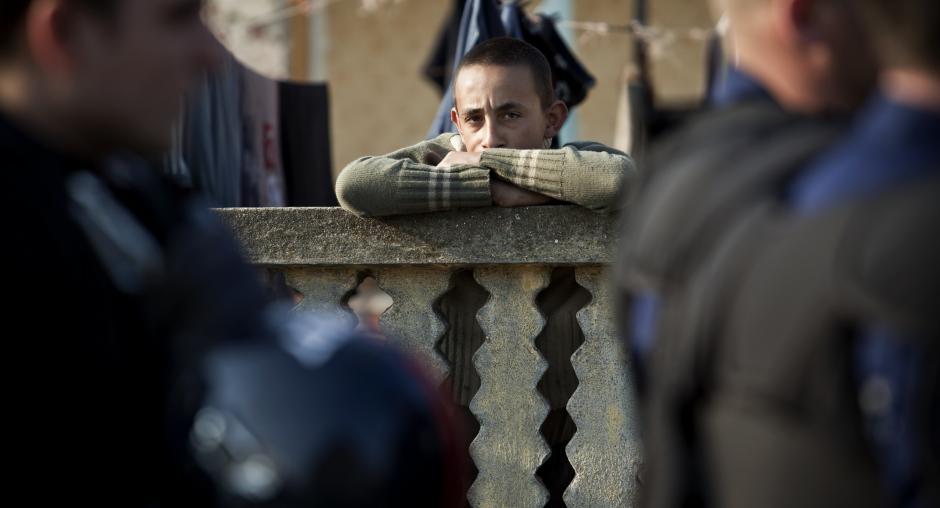Roma and Sinti under attack
The past decade was a period of rising hopes among Roma and Sinti. It was a prolific time in terms of initiatives and programmes, including the 2003 OSCE Action Plan on Improving the Situation of Roma and Sinti within the OSCE Area, and considerable funds were devoted to the improvement of their social and economic situation. Yet not enough of this has translated into tangible outcomes and lasting change for this community.
In fact, there has been a serious and dangerous rise in violence against Roma and Sinti in a number of countries, prompting international organizations to call on governments to step up efforts to promote their social inclusion.
After nearly two decades of engagement, independently and in co-operation with other international organizations, the Contact Point for Roma and Sinti Issues in the OSCE’s Office for Democratic Institutions and Human Rights (ODIHR) has arrived at a simple and disquieting conclusion: it is very difficult to persuade stakeholders to move forward from saying the right things to doing them.
The last few years have been especially troubling. Surprisingly little attention is being paid to the way in which the economic and financial crisis is exacerbating the difficult situation of Roma and Sinti.
Some of the problems are deeply entrenched. There are no quick fixes for the low level of education and alarmingly high unemployment rate among Roma and Sinti, or the discrimination they regularly face in all areas of life.
But other problems are new, clearly triggered by the general rise in social tensions that persisting economic woes entail. Anti-Roma behaviour has changed. Violence is no longer limited to spontaneous escalations of community tension. It is intentional, planned to scare off Roma residents or to “mete out justice”. Protests or marches organized against Roma and Sinti attract significant numbers of spectators or sympathizers, both in village and urban settings. In Devecser, a village in western Hungary, for instance, more than 1,000 people gathered in August for an anti-Roma demonstration organized by the extreme-right political party Jobbik and extreme-right vigilante groups. Anti-Roma ideology is being deliberately spread by populist Neo-Nazi groups seeking to gain influence.
There has been an increase in hate-motivated attacks against members of Roma and Sinti communities, some even leading to death. To name just two recent examples: in June, an off-duty police officer in Hurbanova, Slovakia shot and killed three Roma; also in June, a Roma man died in Sandanski, Bulgaria as a result of a bomb that was set off in front of the headquarters of a Roma political party. The violence is not limited to eastern European countries: tensions with regard to Roma migrants have continued to spark attacks in France and Italy this year.
It is disconcerting that anti-Roma rhetoric has become a characteristic of political discourse in a number of OSCE participating States, at the national and local levels. When Roma and Sinti migration is treated as a matter of public security by some state authorities, when efforts are made to penalize begging or to identify it as a cultural characteristic of Roma, scapegoating is encouraged that in extreme cases can lead to open hostility and violence. While the OSCE and other international organizations have in the past concentrated their efforts on new democracies in crisis or post-crisis situations, there is a need to expand that focus to include consolidated democracies.
Until the economic malaise gripping the entire OSCE region is remedied, the struggle against hate crimes targeting Roma and Sinti is likely to continue.
The European Union (EU) has taken important steps in recent years to improve the situation of Roma and Sinti. It established a Platform for Roma Inclusion as a forum for discussion and sharing good practices, held two EU Roma Summits (in Brussels in 2008 and in Cordoba in 2010), created a Task Force on Roma at the European Commission and adopted several European Parliament resolutions and European Council decisions on Roma. The European Commission’s most recent communication on national Roma integration strategies in May 2012 points to the need for “stronger efforts (…), more concrete measures, explicit targets and measurable deliverables, clearly earmarked funding at national level and a sound national monitoring and evaluation system.”
Yet this comes at a time when governments are facing tough requirements to cut sovereign debts, reduce public spending and execute austerity programmes. It is to be expected that leaderships facing pressure for budgetary cuts will be slow to react or even be tempted to withdraw from previous welfare policies.
In the short and medium terms, therefore, there is cause for concern that human rights violations against Roma and Sinti will continue to rise. Ensuring the effective implementation of commitments to Roma inclusion will remain an important challenge.



